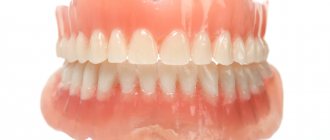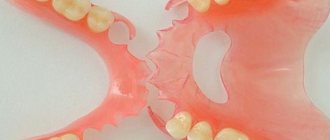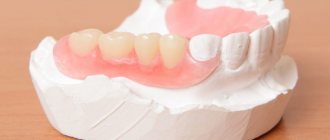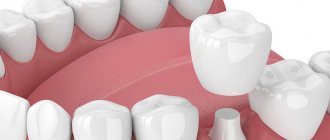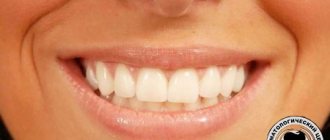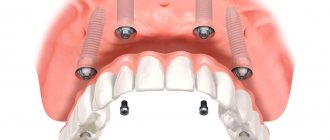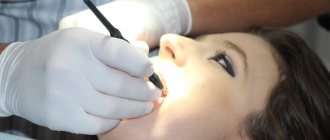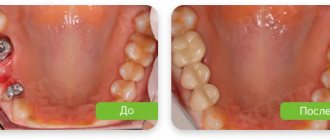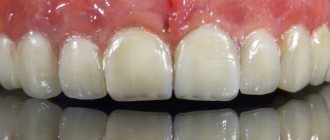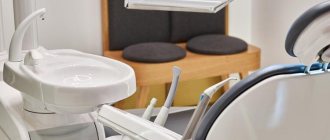The prosthetic procedure is the restoration of damaged or lost teeth, allowing not only to get a beautiful smile, but also to fully realize chewing functions. Various types of dental prosthetics used today make it possible to restore one tooth, several, and even the entire dentition.
First of all, from the point of view of patient convenience, dentures can be removable or non-removable. If it is necessary to replace one or more teeth, dentures are often permanent. In case of complete loss of dentition, previously only removable dentures were used, but today it is possible to install fixed dentures on implants.
Denture: what is it?
Dental structures inserted in place of lost teeth, partially or completely replacing the dentition, are called dentures.
They can be made from a variety of materials, can be attached to the jaw in a variety of ways, and vary in cost. Well-chosen and professionally installed dentures will return a beautiful, charming smile and solve the problem of chewing food. The use of innovative technologies and materials gives modern dentures undeniable advantages:
- comfortable to wear
- Microorganisms do not multiply on them
- light weight
- closes less of the mouth
- look natural
- reliable fixation, all models can be left overnight
All-on-4 design. Prostheses with bar fixation
The essence of this prosthetics is in its name. It involves the installation of a complete denture on one jaw on 4 implant supports. Implants are implanted in an inclined plane; the prosthetic process does not take much time. This prosthesis does not affect changes in taste sensations or diction.
The advantages of such a prosthesis are high aesthetics, second only to classical implantation, reliable fixation, uniform load distribution, a short period of adaptation, the ability to choose a convenient design, and no need for bone grafting.
Disadvantages: high cost compared to removable dentures; the prosthesis still feels more like a prosthesis, and not like your own teeth.
Which dentures are best to install?
Today, dentists can offer a variety of designs from various materials; in addition, dentures can be made in both fixed and removable versions.
The choice of design and material for the manufacture of prostheses suitable for the patient is chosen by the orthopedic surgeon, based on individual indications, the presence of allergic reactions to prosthetic materials and other details revealed during examination and anamnesis.
How long ago were the teeth removed?
Many people are interested in the question of when they can start dental prosthetics after extraction. It’s not easy to answer unequivocally - it all depends on individual characteristics. The average time frame is after 3–6 months, during which time you can undergo a course of treatment if necessary according to indications.
Selection of implant system
To compare dental implants, two main characteristics are taken: the cost of the product and the time frame for survival.
If we talk about economy and premium class implants, the former are inferior to the latter in terms of engraftment speed. This significantly reduces the time required for engraftment, and therefore the entire course of treatment.
Nobel Biocare, Osstem (Korea), AB, and Xive also occupy leading positions in the global market for implantation systems.
Choosing an implantation technique
Among the types of dental implantation that exist today, the most suitable one for a particular patient is selected, taking into account his individual characteristics, wishes and capabilities.
- Intraosseous implantation The implant is fixed directly into the bone tissue. Currently, the technique is recognized as the most effective of all known.
- One-stage implantation One visit is enough to install the implant and temporary crown: this is a type of classic intraosseous implantation, carried out in one stage
From several methods known in modern dentistry, the attending physician will recommend choosing the one that best suits the indications for each patient. Moreover, it is necessary to take into account, in addition to individual characteristics, indications and contraindications for the use of a particular method in each specific situation.
Package of documents that need to be collected
First of all, you need to contact a dentist, who will confirm on an official form that you need a service such as dental prosthetics and issue a certificate or referral. Remember that the benefit is provided solely for medical reasons, and not simply at the request of the patient.
Next, you will need to attach a passport, compulsory medical insurance policy, pension certificate to the received document - copies are needed, but when going with social security, it is better to play it safe and take the originals of these documents with you.
Important! We strongly recommend that you contact local government and social security authorities to find out in detail what list of documents needs to be collected for citizens living in your region, because everywhere it may differ slightly.
The collection of documents does not end there. You need to contact the housing office at your place of residence and request a certificate of family composition. Also, depending on your social status, for example, if the service is needed because your income is less than the subsistence level, you may be asked to provide a certificate of income in form 2NDFL for each family member for the last three months.
If you are seeking to obtain a quota for a disabled minor child, then a birth certificate and a copy of the passport of one of the parents/guardians must also be added to the package of documents.
After this package of documents has been collected, you need to go to social security, where you will also have to fill out an application for a quota in the form established by the state.
Types of prosthetics
Traditionally, orthopedic dentists work using two methods of dentition restoration:
- therapeutic recovery
- dental prosthetics
When restoring the dentition, the orthopedist tries to preserve the original shape of the tooth as much as possible; this is possible when part of a tooth is lost. For this purpose, two methods are used - a dental inlay and the installation of a pin, which serves as the basis for restoring teeth.
Today there are quite a lot of dentures in use, which can differ greatly from each other. To have an idea about them, you should familiarize yourself with the main types of such prostheses.
Partially removable dentures
Instead of missing one, two or more teeth, removable dentures are inserted, which are indicated if:
- premolars and molars are lost; incisors and canines
- there is a defect in the smile area
- temporary dentures needed
Fixed dentures
Currently, there are 3 types of fixed dentures and bridges. The installation of such dentures is done “forever”, and they are fixed in place for the entire time of wearing. They are distinguished by great strength and reliability, even when compared with the most expensive removable dentures.
Fully removable
This type of dentures is called “false jaws.” During such dental prosthetics, an individual impression is first made, and then the dentures are made from special acrylic, nylon and acry-free.
This type of denture is recommended for those patients who are missing molars or need to have them removed. Sometimes patients are recommended to use a special gel for fixation, which prevents the denture from moving even during chewing, thereby preventing injury to the gums.
Removable dentures for complete absence of teeth
Absolute edentia is the loss of one or two complete rows of teeth. The issue can only be resolved by inserting removable dentures or implantation. In the second case, the effect is long-term, the patient feels more comfortable, and externally, the crowns on implants look more attractive.
However, you need to know that in 90% or more cases, when teeth have been lost for a long time, the bones atrophy due to the lack of regular chewing load. In this option, the issue of implantation without bone grafting cannot be resolved. Doctors use one-stage techniques that do not require an increase in the volume of bone tissue, as well as a method where prosthetics are performed on the third day.
Dentures for partially missing teeth
If the patient has one, two or several of his teeth left in the oral cavity, then the dentures rest on them and on the gums. This method allows you to securely secure the inserted prosthesis and distribute the load more evenly.
Dental structures of a removable type do not provide for a long period of use. The reasons for this are their inconvenience and lack of aesthetics. However, the main reason is that their fixation on the gums and supporting living teeth ends up with them bearing the main load when eating. The jawbone does not experience pressure, atrophies and sags. As a result, the removable denture will have to be replaced.
Acrylic (Plastic) dentures
Affordable and without contraindications, acrylic prostheses are the most common today. Another advantage of such structures is that there is no need to grind the teeth before installation: they are secured with special hooks.
Their use is justified if it is necessary to temporarily close the space available in the dentition due to missing teeth while a permanent dental prosthesis is being prepared. The second option when these prostheses are needed is engraftment during implantation.
Removable dentures made of nylon
Nylon is widely used for the manufacture of removable structures. The “suction” method is used for fastening, and the elasticity and resistance to stress makes such prostheses in demand among patients. Suitable for allergy sufferers.
Removable dentures “Acry-free”
Dental prostheses made from acry-free, a polymer material that does not contain acrylic, are becoming increasingly popular. It has sufficient elasticity and softness, and therefore prostheses made from it do not damage the mucous membranes. High resistance to mechanical damage allows you to wear them for up to ten years. In addition, Acry-free removable structures look quite attractive: the translucent material makes dentures less noticeable. They are ideal for allergy sufferers because they do not contain any metal elements and do not cause negative reactions.
Clasp dentures
The German word “Bugel” (arch) gives its name to partial dentures, which are an expensive, complex removable system. Clasp dentures are convenient and reliable to use. They compare favorably with their plastic counterparts in that they ensure uniform distribution of pressure on the gums and remaining teeth, while acrylic (plastic) ones load the gums and are only held in place by the teeth.
New generation of dentures without palate
The use of removable dentures has been practiced for many years, but modern models have a number of significant differences that make them more comfortable. The materials used to make the old type of structures made them rigid, while they covered most of the palate, which often caused vomiting. Today there are no such problems with dentures.
The modern market offers removable “sandwich” dentures for teeth that are fixed to the gums and held in place due to their own shape, without the use of fixing gels or adhesives. Such dental prosthetics solves all problems: no negative consequences such as vomiting or distortion of the taste of food; the appearance and quality of everyday life changes for the better.
Removable dentures on implants
Implants are titanium structures that are implanted into bone tissue and perform the function of a tooth root. They are indicated if there is nothing left of the teeth, not even the root. After engraftment, a prosthesis is attached to them, or a crown is put on.
- Screw-retained dentures. The crown is secured to the implant using a screw. If necessary, it can be removed
- With cement fixation. The crown is attached to the implant using a special aba that secures it and prevents it from being removed. This technique is more often used for prosthetic teeth that are visible when a person smiles.
- All-on-4. Four implants are implanted into the bone at different angles, after which a bridge-like structure is installed on them. Almost an analogue of this method can be the implantation of six implants (All-on-6), on which a bridge is placed. With such dental prosthetics, the load during chewing is distributed more evenly. This technique is applicable even when the bone tissue has significantly atrophied
- Dental prostheses for one-stage (basal) implantation. No major surgical intervention is required; implants are implanted into deep-lying layers of bone, making it possible to install prostheses in severely atrophied tissue. This technique allows for the installation of a crown.
- Prostheses for 2-stage implantation with delayed loading: several months (three to four, or even six months) pass before the installation of crowns after implantation. During this time, crowns are placed, which are subsequently replaced with permanent ones.
How long will you have to wait
We have already told you how to get a quota for dental prosthetics - you need to apply with a package of collected documents to the social security authorities, where you will be put on a waiting list.
Unfortunately, more and more people want to receive this service every year, because not only many pensioners, but also a large number of young people need it. Massive loss of teeth is associated with environmental degradation and poor nutrition, lack of time and money for the treatment of dental diseases, and stress. In this regard, no one can say for sure how long you will have to wait in line.
“We applied for a quota for my grandfather and waited eighteen months to receive it!!!! It's just awful. Everything is easy and beautiful only on paper, but in reality, not all people, and especially socially vulnerable sections of the population, have the opportunity and strength to endlessly knock on the thresholds of social services. Yes, and wait a year and a half!!! Imagine the standard of living of those old people without teeth who wait so long. Today it’s better to take out a loan or installment plan and go and do everything for a fee - it’s quick and not so humiliating.”
Lion, review from jur24pro.ru
After the patient receives a quota, he will be issued a coupon with a limited validity period. That is, the service will need to be used for a certain time - in different regions of Russia the period can range from 2 weeks to 6 months. If you do not take advantage of the benefit within the designated period, you will have to stand in line again. It should not be forgotten that the right to free dental prosthetics or repair of dentures is granted to citizens of the country only once every 5 years.
Features and types of dental prosthetics, pros and cons
If we talk about dental prosthetics, each type has its own characteristics, positive and negative sides:
- Anterior dentures should look aesthetically pleasing and be installed as quickly as possible. For this purpose, temporary structures are widely used, allowing you to choose an individually suitable color and shape of teeth.
- When premolars and molars need prosthetics, their main function – chewing food – comes to the fore. Accordingly, the structure must be durable, meet the anatomical features of this type of teeth and withstand significant loads. Modern ceramic inlays, zirconium and metal-ceramic crowns meet these requirements.
In dentures, there are several categories: partially removable, removable, conditionally removable, and fixed prosthetics.
Partially and completely removable dentures include:
- clasp
- lamellar
Conditionally removable dental prosthetics include the following prostheses:
- with screw fixation on the implant
Non-removable ones include:
- crowns
- veneers
- tabs
- Lumineers
- bridge structures
- implants
Clasp structures supported by implants
Due to the fact that clasp prosthetics requires support, in the case of complete edentia, the clasp can be installed only after implantation. Thanks to the metal frame in the form of an arc, strength and uniform distribution of the load when chewing are ensured. Artificial teeth and a plastic base that imitates gums are attached to the frame. There are several types of fastening: hooks, clasps and crowns.
The “All-on-4x” design is also a variant of the clasp on implants.
Types of materials for making prostheses
With an abundance of materials, dentists have a fairly wide choice for the production of dental prostheses. Each material has its own characteristics that allow it to be used for specific tasks.
- Acrylic (plastic). The advantage is the low price, the disadvantage is a short service life, therefore it is used for the manufacture of temporary crowns and removable dentures
- Ceramics are closest in color to tooth enamel and have a certain level of strength. Thanks to modern technologies, prosthetics have been developed from a more durable material - glass ceramics based on lithium disilicate. It serves as a material for the production of aesthetic metal-free E-Max crowns
- Metal alloys - cobalt- and nickel-chrome, alloys with gold serve as materials for the manufacture of crown frames, solid bridges and crowns without ceramic coating and clasp structures
- Zirconium. Oxide or dioxide is used, which is white in color and has great strength.
It is difficult to select the best denture from the materials offered. Almost all of them can be used on posterior or anterior teeth, premolars and molars. It all depends on the indications and individual characteristics.
Technology and methods of prosthetics
Innovative technologies are also coming to dental orthopedics. The emergence of new materials and techniques allows for high-quality diagnostics (computed tomography, 3D modeling of future structures, etc.). From the initial examination to the stage of installation of dental prostheses, the orthopedic dentist has the opportunity to use the latest achievements of science. Today it has become possible in practice to manufacture high-precision durable orthopedic structures made of ceramics using milling machines using 3D models.
For all types of dental prosthetics, laboratory stages are mandatory, although today the use of innovative materials and technologies makes it possible to install dental prosthetics in one visit to an orthopedist. In this situation, the construction is manufactured on a special machine.
Oral examination
Any treatment process must begin with an examination. A preliminary examination allows you to determine the need for prosthetics, choose the optimal type of design and amount of work.
Examination of the oral cavity in dentistry Additional examination (instrumental, x-ray, etc.) provides information about the condition of the supporting teeth, periodontal tissue, bone tissue, the need for root canal treatment, and the possible presence of inflammatory elements at the tops of the root canals or in the bone.
This is an integral stage of successful prosthetics, as it allows not only to identify and eliminate hidden problems, but also to avoid possible complications in the future, after installation of the prosthesis .
Preparation for prosthetics
Before proceeding with the manufacture and installation of dentures, it is necessary to carry out thorough preliminary preparation. If during the initial examination the doctor reveals diseases of the teeth, gums or other problems with the oral cavity, then you will need to undergo a mandatory course of therapeutic treatment. Also, regardless of the planned type of dentures, you should have your teeth professionally cleaned. If a patient requires microprosthetics using lumineers or veneers to improve their appearance, they will need to undergo whitening procedures in addition to cleaning. The presence of malocclusion and lack of space for implantation may require a course of orthodontic treatment.
The absence of dental units in a row causes a lot of problems:
- articulation disorder;
- curvature of the dentition;
- malocclusion;
- displacement of dental units;
- bone tissue atrophy;
- problems with the digestive tract;
- psychological complexes.
The PROFI-Dent clinic will help you quickly restore your full smile using low-traumatic methods of dental prosthetics. The cost of dental prosthetics in Moscow in our clinic is affordable to every patient.
Timing of prosthetics
It is impossible to talk about the exact timing of the installation of dentures: it depends on the type of prosthetics and the need to take a break between the main stages of dentures.
Regardless of the intended type of prosthetics - removable or fixed - the design is made by a dental technician in the laboratory using previously made impressions of the patient. Before placing the prosthesis in place, the patient will have to visit the doctor at least three times. At the first examination, you need to diagnose, prescribe treatment if necessary, and make an impression. At the following appointments, the prostheses are fitted and adjusted.
More time will be needed when installing implants, because it is necessary for the artificial root to take root, after which only a permanent crown can be installed. This can take from three to four months to six months.
